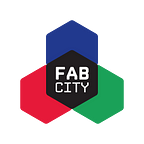Full Stack Implementation Guide V1.0
A Guide to Support Implementing the Fab City Full Stack Locally
Accomplishing the Fab City goal of localities producing (almost) anything they consume is not an easy task. By adopting the 2054 challenge, cities, islands, regions and countries can radically transform the way production and consumption happens within their metropolitan regions, by replacing standardization with smart customization, focusing on interconnected processes instead of isolated products, and more importantly: empowering citizens and communities while reducing the environmental impact of urbanization.
But, where do we start tackling the 2054 challenge? How do we involve local communities in a meaningful way to achieve the goal of producing (almost) anything?
Not all Fab Cities, Islands, Regions and Countries are the Same
Unpacking the challenge in many ways over a period of years turned out complex. Each of the Fab City Network localities face their own local challenges, but also show unique opportunities for prototyping Fab City locally.
Even by gathering with the global Fab City Network community multiple times a year, discussing trending Fab City related topics, sharing working practices and open source knowledge with the wider network as well as a deep alignment of purpose and culture, still the complexity of implementing the Fab City concept turned out to be a challenge within the 2054 challenge.
Building on Lessons Learned from the Past
Big transitions require time to develop and to consolidate in global communities. The complexity of the Fab City Network, locally and globally, as well the 2054 challenge demonstrated a need for a clear and simplified guide for cities, islands, regions and countries on how to start piloting or even prototyping the Fab City concept locally.
By means of the Fab City Full Stack framework, cities and regions interpret the Fab City challenge in a multiscale and ecosystemic approach. (Read here more information about the Fab City Full Stack).
2054 challenge, Fab City Full Stack framework and the constant evolution to transform communities, societies and ecosystems — all this sounds great in theory, but how does it work practically in local contexts of the Fab City Network?
By providing assistance and clear guidance with the Full Stack Implementation Guide, the Full Stack framework and its layers can be divided into implementable key actions, which in next steps supports the definition of a local Strategic Action Plan for the 2054 challenge.
The Fab City Implementation Guide has been devised by the Fab City Foundation team from a four-year engagement coordinating the Fab City Network. It draws on the experience of cities and regions, their ongoing feedback and the framework of the Foundation (Fab City Full Stack) to devise clear yet flexible guidance.
The guide supports making local Fab City goals implementable, by providing guidance through recommendations of objectives, key actions and knowledge capturing strategies in each Full Stack layer.
Map, Experiment and Rethink Locally
Therefore, the Implementation Guide is divided into the seven Fab City Full Stack layers. In each layer, Fab City Network members will find guidance on how to: 1) map and research local resources, 2) experiment through community activation, events, and co-creation activities and finally, 3) rethink local processes and strategies. In addition, each layer presents examples from other Fab Cities, or outside the global initiative, which can inspire and help localities to refine their efforts at the local and global level.
Piloting and Prototyping Fab City
In addition, the Full Stack Implementation Guide is also structured following the Fab Cities’ development level. What does this mean?
Currently, the Fab City Global Initiative identifies two main development stages inside the Fab City Network based on the level of involvement of the local Fab City community, as well as the participation of each Fab City Network member within the global community.
The first development stage is called “Piloting Fab City,” and it’s about sensing, mapping and envisioning. It is composed of cities and regions that have recently started to define their own Fab City journey. These cities and regions are at the stage of connecting with the local community, defining important stakeholders and envisioning the first roadmap to stimulate sustainable development and innovative solutions to environmental and urban challenges.
The second development stage is called “Prototyping Fab City”. The focus here is in prototyping, evaluating and operationalizing. Cities and regions in this stage show exceptional Fab City developments at the local level and ambitious, collaborative and urgent climate actions with science-backed research. The Fab City Network members in this stage have a clearly defined internal governance structure (e.g., Fab City associations, Fab City cooperatives), as well as established conditions for project generation and potential incubation.
Next steps: Piloting the Implementation Guide within the Fab City Network
The Full Stack Implementation Guide is a guide for the Fab City Network, therefore their inputs are essential for the development process.
Accordingly, the guide has been reviewed through co-creation processes within the Fab City Network before and during the Bali Fab Fest.
Participants were asked in several sessions to think of specific local projects within the confines of Fab City Full Stack layers. During these workshops, very detailed local examples for each of the Full Stack layers have been described by the network members. The case studies followed the above described key actions: Map & Research, Experiment, and Rethink. Participants discussed outputs of each of the key actions, tools and resources needed to accomplish these tasks successfully.
For now, the co-creation process has only taken place for the first development stage called “Piloting Fab City”. In the upcoming months, the guide will be tested hands on with members of the Fab City Network.
Stay tuned!
